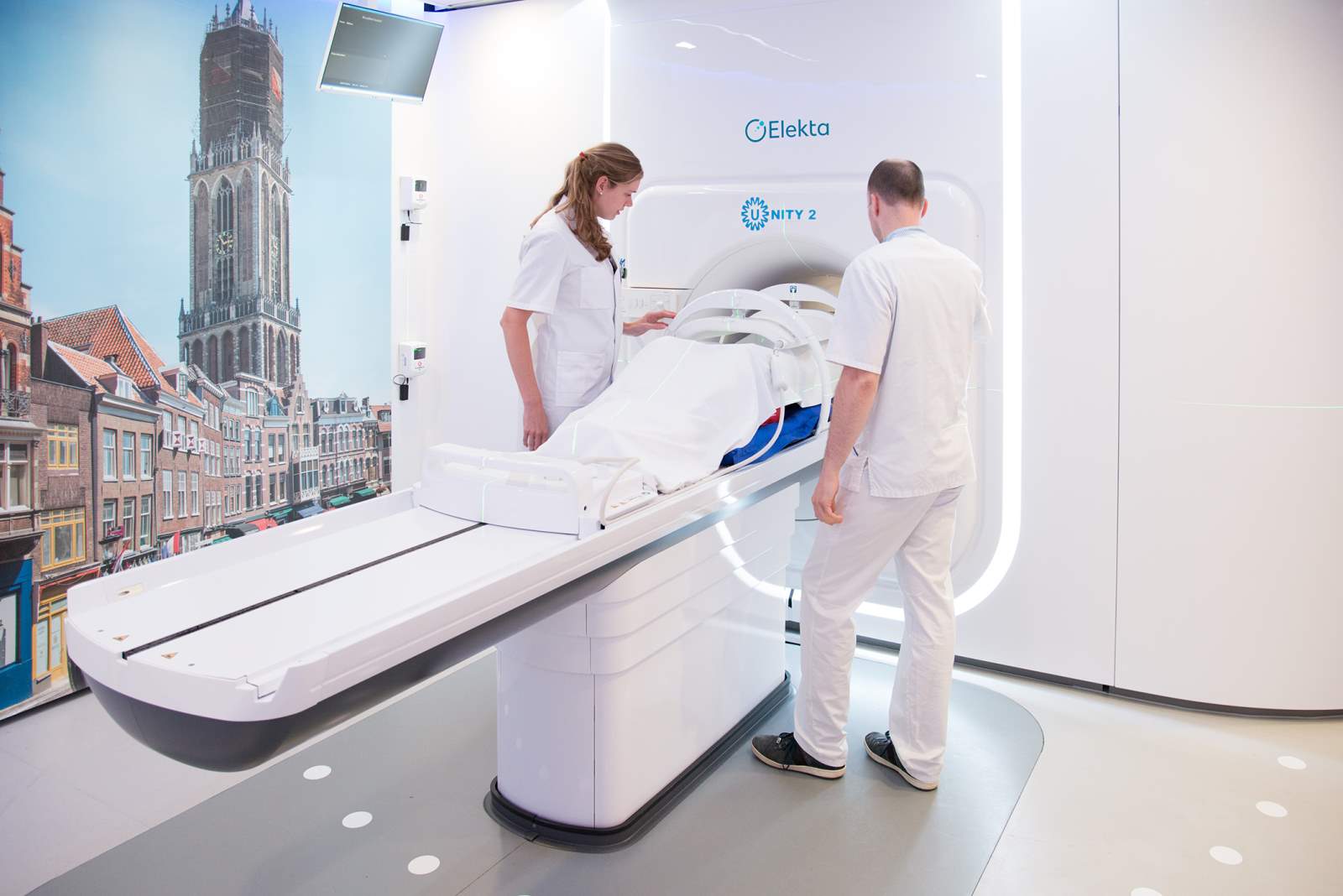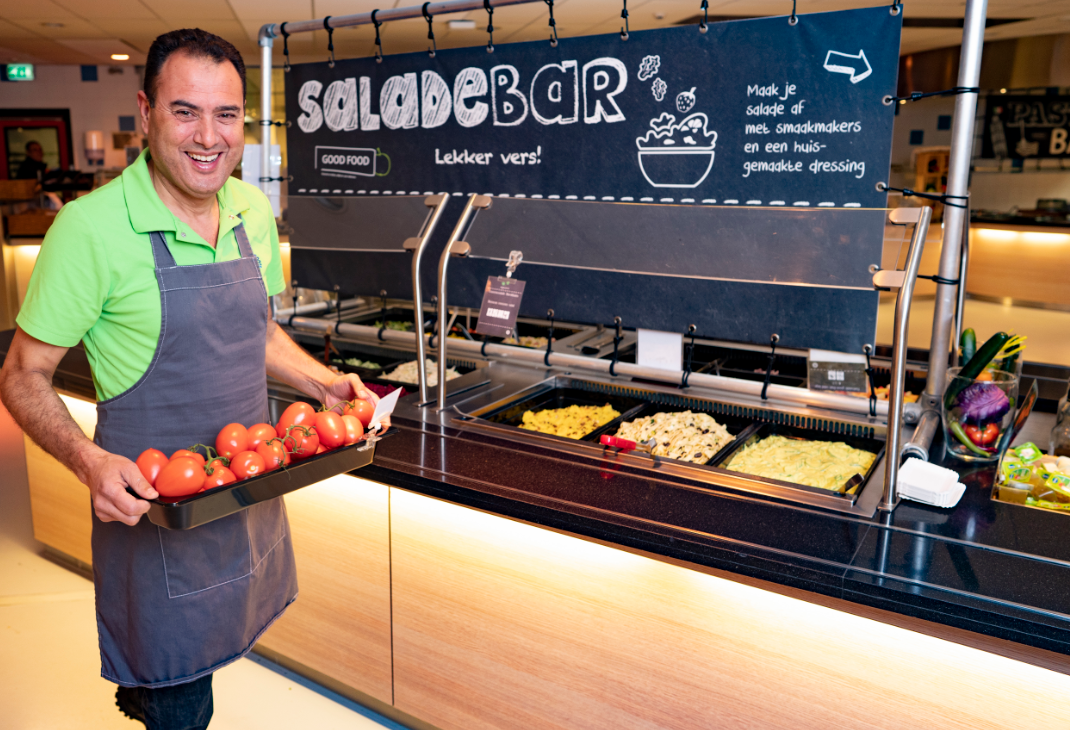Care for our patients
We offer patients qualitative and efficient care based on the most recent insights, within our care profile. This pertains to care for which we have a statutory task, such as level 1 trauma care and expertise centers, care within our six focal points and complex care (such as multi-specialties or multi-diagnostics). Our principle is that a patient should get treatment there where it is best for them. And that our patients can control the treatment and experience our people-oriented approach and feel safe during care. We shall mention a few examples of this in 2021.
Better and less strenuous treatment of patients
In 2021 we took positive steps in the field of image-guided interventions, one of our accelerators from our Connecting Worlds strategy. Optical, X-ray, and especially MRI-guided interventions (operating without cutting) is playing an increasingly prominent role within our focal points, since this form of intervention puts less stress on patients and gives better results.

In 2021 we treated the first patient on our third MR-Linac . With our large MR-Linac facility we are unique in the world. The MR-Linac is a combination of a radiation accelerator and a diagnostic MRI scanner. With this combination, it can be determined exactly where in the patient’s body the tumor is. This makes the treatment of the tumor very precise and avoids the radiation of healthy tissue. We developed the MR-Linac in close collaboration with our partners Elekta and Philips .
“With our large MR-Linac facility we are unique in the world”
In 2021 we also introduced a new ‘CT-Street’ ’ to improve and accelerate the diagnosis of patients. The CT-Street consists of two ultra-modern spectral CT scanners that give a better image quality and therefore more information. Patients also spend less time in the scanner... These CT scanners are used for complex acute radiology treatment of all organs, diagnostic oncology, and image-guided treatment. UMC Utrecht is the only healthcare institution in the world that has the two latest spectral scanners from Philips to diagnose patients more effectively. This purchase is in keeping with UMC Utrecht’s policy of more targeted treatment with the help of better imaging. We have also decided to make certain improvements to our complex acute care in surgery. In 2022, once the necessary conversion work is completed, a CT scanner will therefore be set up at emergency care .

The first patient in the Netherlands receives an artificial heart
In November 2021, at UMC Utrecht, a patient with very severe heart failure was the first person in the Netherlands to receive a complete artificial-heart implant. This innovative artificial heart replaces and takes over the function of the entire heart and improves the pumping function and blood supply. As a result, the patient experiences fewer symptoms. The implantation of the artificial heart was successful. The artificial heart is an alternative to a donor heart if the patient’s condition is too critical to wait for a heart transplant. There is a great shortage of donor hearts in the Netherlands: around 120 heart patients are on the waiting list for a donor heart every year.
Concentration of pediatric cardiology and highly complex interventions
In the interest of quality care for people with a congenital heart defect, former Health, Welfare and Sport Minister De Jonge decided at the end of 2021 to concentrate interventions on children, as well as highly complex interventions on adults with a congenital heart defect, in two places, namely Erasmus MC and UMC Utrecht. This decision subsequently led to a public and political debate. In February 2022, the current Health, Welfare and Sport Minister Kuipers asked the Dutch health care Authority after the summer recess of Parliament to deliver an impact analysis that will chart the impact on patients and the four centers in question.
UMC Utrecht, a spearhead hospital for healthy nutrition

In 2021, UMC Utrecht became the spearhead hospital in the field of healthy nutrition. The National Prevention Agreement of 2018 gave all hospitals the task to deliver a healthy nutrition offer for patients, visitors and employees by 2030. Overweight/obesity and underweight are causing a fast-growing number of (chronic) diseases, and therefore an increasing care burden. By stimulating a healthy lifestyle, this increase can be slowed down to improve the quality of life. Hospitals play an important role in prevention and encouraging a healthy lifestyle. Healthy nutrition further contributes to faster recovery in patients, shorter hospitalization, and fewer risks of complications. As a spearhead hospital, we are taking the lead in these developments and are committed as a forerunner to produce a healthy nutrition offer as early as June 2022. In this way we are serving as an example for other hospitals, for instance with the project Goede zorg proef je (‘good care you can taste’).
GROZUtrecht
In 2021 GROZUtrecht was launched: a unique cooperation in the Utrecht region to bring about a visible, sustainable, and targeted change in focus from care to health. ‘GROZ’ is the Dutch word ‘zorg’ (‘care’) written backwards, to symbolize the change. The first letter is no longer z for ‘ziekte’ (‘disease’), but g for ‘gezondheid’ (health). Within GROZUtrecht, we work with citizens, the authorities, other healthcare institutions, knowledge institutions, health insurance companies, and entrepreneurs on the issue of health, with the topics ‘Lifestyle in the neighborhood’, ‘Look out for each other’, and ‘Vitality network in the district’ And always based on the explicit needs of citizens and their own living environment (districts and neighborhoods).
UMC Utrecht drives the data/ICT component in GROZUtrecht. The various components form the basis for a successful collaboration. Digital neighborhood portals, which show which digital applications are available in the neighborhood to contribute to health, play an important role in these activities. GROZUtrecht works closely with Health Hub Utrecht to translate the goals of the Health Hub Utrecht coalitions into neighborhood-oriented support activities <verwijzing naar informatie over Health Hub Utrecht in jaarverslag>.